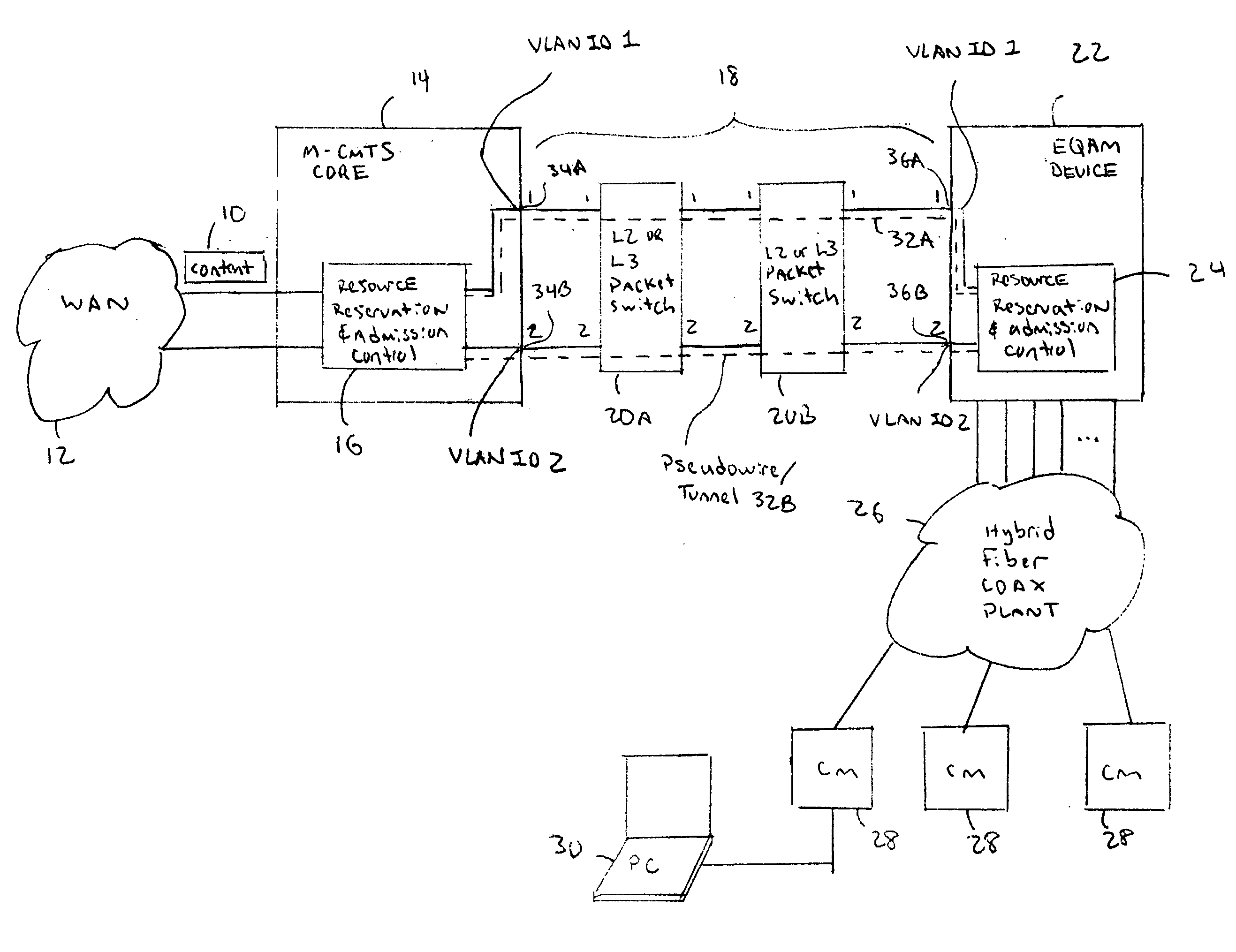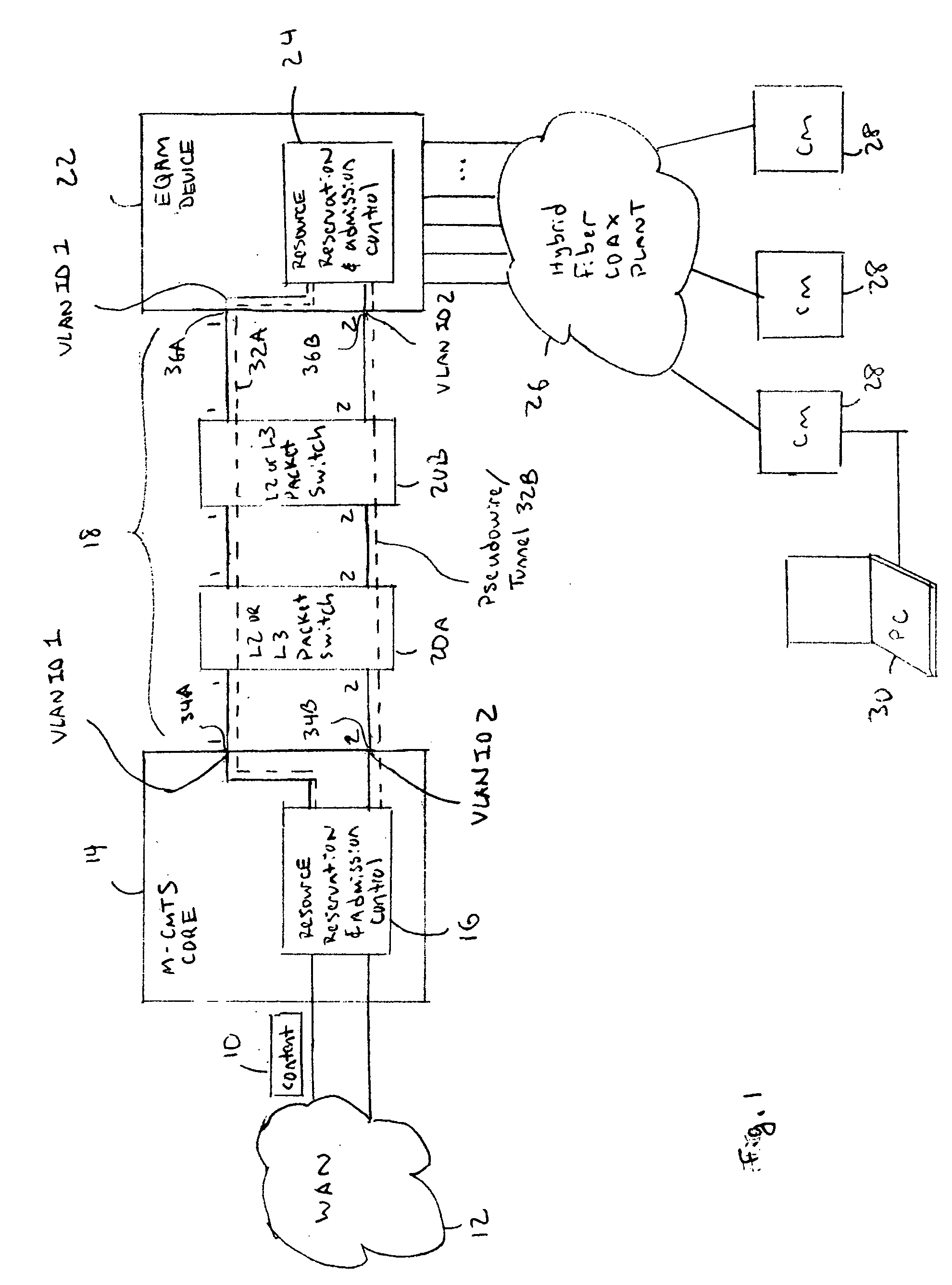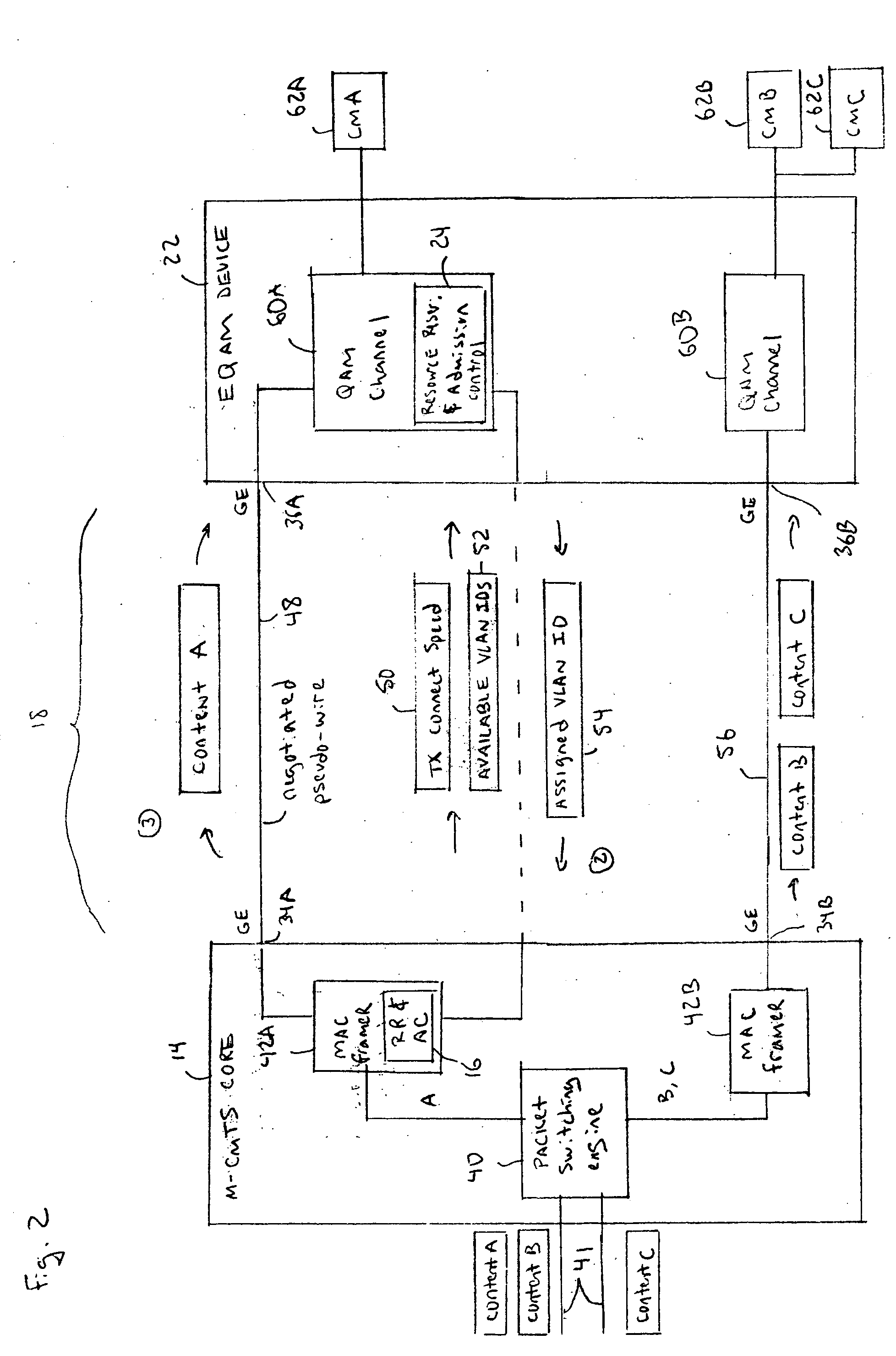Resource reservation and admission control for IP network
a resource reservation and resource control technology, applied in the field of resource reservation and admission control for ip network, can solve the problems of affecting the bandwidth capacity of the cin, the subscription of some links and the subscription of other links, and achieve the effect of effectively allocating network bandwidth
- Summary
- Abstract
- Description
- Claims
- Application Information
AI Technical Summary
Benefits of technology
Problems solved by technology
Method used
Image
Examples
Embodiment Construction
[0015] Referring to FIG. 1, a Modular CMTS Core 14 is connected to a Wide Area Network (WAN) 12 and to one or more Edge Quadrature Amplitude Modulation Interface (EQAM) devices 22 through an Internet Protocol (IP) network 18. In one embodiment, the IP network 18 may include one or more Layer-2 and / or Layer-3 packet switching devices 20A and / or 20B. The EQAM device 22 is connected to a Hybrid Fiber Coaxial (HFC) cable plant 26 that is used for communicating to multiple Cable Modems (CMs) 28. The CMs 28 are connected to any type of equipment that may need to transmit or receive DOCSIS IP data. For example, a Personal Computer (PC) 30, Set-Top Box (STB), television, IP phone, or any other type of IP endpoint or customer premise equipment.
Resource Reservation
[0016] A resource reservation and admission control scheme is performed by a controller 16 in the M-CMTS Core 14 and a controller 24 in the EQAM device 22. The controllers 16 and 24 set-up pseudowires 32 over the IP network 18. T...
PUM
 Login to View More
Login to View More Abstract
Description
Claims
Application Information
 Login to View More
Login to View More - R&D
- Intellectual Property
- Life Sciences
- Materials
- Tech Scout
- Unparalleled Data Quality
- Higher Quality Content
- 60% Fewer Hallucinations
Browse by: Latest US Patents, China's latest patents, Technical Efficacy Thesaurus, Application Domain, Technology Topic, Popular Technical Reports.
© 2025 PatSnap. All rights reserved.Legal|Privacy policy|Modern Slavery Act Transparency Statement|Sitemap|About US| Contact US: help@patsnap.com



